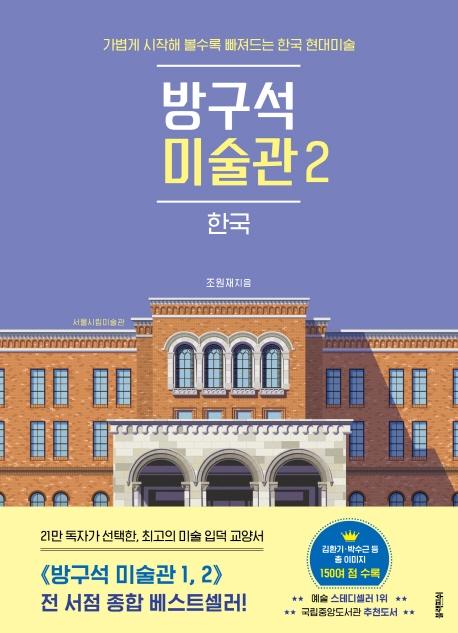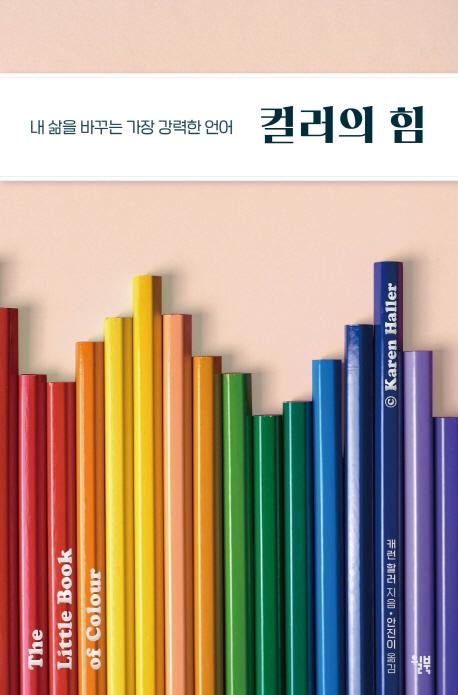- 주문상품수량
- 개
- 예상적립금
P - 상품할인금
- 원
- 배송료
- 원
- 주문합계
- 원
네비게이션 실시간 인기 책
Byun Shiji [영문판] A Painter of Storms
- 서종택 저
- Yuhyun Catherine Park, James Maxwell Milne 역
- 열화당
- 2017년 12월 26일
-
정가25,000원
-
판매가25,000원 [0% 할인]
-
페이코혜택가
페이코 혜택가 안내
3천원 이상 구매 시 1,500원 할인ID당 총 3회 할인가능
-
페이코혜택가
페이코 혜택가 안내
3천원 이상 구매 시 500원 할인ID당 총 3회 할인가능
-
결제 혜택무이자
카드할인/포인트결제 안내
제휴카드
반디앤루니스 롯데카드 결제금액 최대 25% 청구할인 (1만원 이상 결제건에 한해 월 2회, 건당 최대 1만원 할인) 반디앤루니스 우리V카드 결제금액 10% 청구할인 포인트결제
OK캐쉬백 포인트 최소 10원부터 전액 사용 or 1% 적립 현대카드 M포인트 결제금액의 최대 10% 사용 가능 신한카드 포인트 결제금액의 최대 10% 사용 가능(일부카드) 하나(구.외환) 포인트 보유 한도 내에서 100% 사용 가능 씨티카드 포인트 결제금액의 최대 50% 사용 가능 할인카드
NH농협 TAKE5카드 20% 청구할인(Edu Pack) 채움 플래티늄 멀티카드 20% 청구할인 모바일 Tmoney 신한카드 10% 청구할인 신한카드 Shopping 10% 청구할인 NH농협 체크카드 10% 청구할인 NH20 해봄 신용카드 10% 청구할인 씨티 클리어 카드 7% 청구할인 NH20 해봄 체크카드 5% 청구할인 NH농협 LADY다솜카드 5% 청구할인 신한카드 큐브 5% 청구할인 신한카드 큐브 PLATINUM# 5% 청구할인 
무이자 안내

-
적립금750원 적립 [3%P]
NAVER Pay 결제 시 네이버페이 포인트 5% 적립 ?
추가 적립금 안내
[2천원 추가 적립]
총 주문금액 5만원 이상 구매 시 2,000원 추가 적립
도서(eBook포함)만 구매 시 적립 대상에서 제외업채배송상품 포함(기프트, 업체배송 등) 5만원[멤버십 추가 적립]
슈퍼루니 : 3% 추가 적립
골드루니 : 2% 추가 적립
실버루니 : 1% 추가 적립
단, 국내도서, eBook만 구매 시 적립 불가

-
네이버마일리지적립


-
배송구분업체배송(반디북)
-
배송료무료배송
-
출고예정일
출고예정일 안내
※ 출고예정일은 도서 재고상황에 따라 변동될 수 있습니다.
 2024년 07월 09일(화)
2024년 07월 09일(화)※ 출고예정일은 도서 재고상황에 따라 변동될 수 있습니다.
당일배송 가능지역 검색

“도로명주소”를 쉽게 찾아보세요
1. 도로명으로 검색하기 (예, “직지길” or “직지길+322”)
2. 건물명으로 검색하기 (예, “반디앤루니스빌딩”)
3. 동(읍/면/리) 으로 검색 (예, “인사동” or “인사동+43”)
4. 도로명주소를 모르실 경우 도로명주소 안내시스템(http://www.juso.go.kr)에서 확인해주세요.
주소의 동(읍/리/면) 또는 마지막 부분을 입력하신 후 검색을 누르세요.
이책의 원서 정보
변시지 [개정판] 서종택 저 | 열화당 | 2017년 05월


지금 이책은
- 판매지수 : 0
이 분야의 베스트셀러
-
 방구석 미술관 2 한국
조원재
16,650원
방구석 미술관 2 한국
조원재
16,650원
-
 컬러의 힘
캐런 할러
13,320원
컬러의 힘
캐런 할러
13,320원
-
 만화 캐릭터 데생 입문_360도 어떤 각도도 완벽 마스터
후지이 에이슌
16,200원
만화 캐릭터 데생 입문_360도 어떤 각도도 완벽 마스터
후지이 에이슌
16,200원
책 소개
출판사 리뷰
변시지(邊時志, 1926-2013)는 제주 출생의 작가로서, 주로 제주의 바다와 바람과 말을 그렸다. 한 마리의 바닷새와 돌담의 까마귀와 쓰러져 가는 초가와 소나무 한 그루와 마침내 이 모든 것들을 휘몰아치는 바람의 소용돌이―그의 이러한 풍경 속에는 어김없이 구부정한 한 사내가 바람을 마주하고 서 있는데, 이러한 변시지 회화의 기본구도 속에는 형언할 수 없는 비애와 고독감이 고즈넉하게 녹아 있다. 화면 전체가 장판지색 혹은 건삽(乾澁)한 황토빛으로 처리되어 있고, 풍경과 인물은 먹선의 고졸(古拙)한 맛과 역동성이 함께 어울려 장대한 대자연의 율동으로 형상화한다. 제주에서 출생하여 어려서 일본으로 건너가 미술수업, 23세 때 일본의 「광풍회전(光風會展)」 최고상을 수상하여 화제를 모았던 그는 귀국하여 서라벌예대 교수를 역임하며 극사실의 비원파(秘苑派) 시절을 거쳐 마침내 제주로 돌아간다. 실로 40여 년 만의 귀향이었고, 〈폭풍의 바다〉 연작들은 자기검증의 결실이었다. 저자 서종택 교수는 이 책에서 “어설픈 서구 추수의 모더니즘 속에서 자기 예술의 정체성을 찾는 일의 어려움을 제주-오사카-동경-서울-제주로 이어지는 작가의 고향회귀의 과정이 잘 말해 준다. 변시지 예술의 구도자적 순례는 대지와 바람의 뒤섞임 속에서 마침내 황토빛으로 열렸으며 그것은 결국 그의 사상이 되었다. 그는 자연 속에서의 인간의 실존적 위상을 바라보는 우주적 연민, 달관과 체관의 어떤 높은 경지에 이르렀다. 그의 그림처럼 예술과 풍토, 지역성과 세계성, 동양과 서양이 함께 만나는 희귀하고도 소중한 사례는 아직 없다”고 결론 짓고 있다.
변시지의 그림은 얼핏 보기에 제주의 풍물이 시적으로 처리되어 있는 것처럼 보인다. 갈매기와 바닷새와 쓰러져 가는 초가, 바람 혹은 태양을 마주하고 망연히 서 있는 사내― 이 소재들은 그러나 인간 존재의 근원적 상황을 드러내기 위한 부수적인 소도구일 뿐 제주풍경을 서정적으로 그려낸 풍물시(風物詩)가 아니다. 풍경으로 처리된 변시지의 인물에서 우리가 느끼는 것은 인간에 대한 연민과 우수이고 그 표현의 저돌성은 모두 아름답고 개성적이다.
이번에 나온 영문판은, 2000년 이후 변화된 내용을 수정하고, 일부 작품을 교체하여 다시 편집한 국문 개정판을 영역한 것이다.
Preface to the Revised Edition
This book is a collection of writings about Byun Shiji, which are based on my encounters and conversations with him at his exhibitions and atelier, as well as at various locations on Jeju Island. It may seem a little out of the ordinary that such a book would come from an art world outsider. Nevertheless, these writings are a modest dedication to a great painter as well as a line of inquiry posed to the art community, which has been swamped by contrived Western-style modernism and stubborn traditionalism.
Byun Shiji passed away in June of 2013. It happened so suddenly, and to a man whose life embodied the pilgrimage of a truly great artist, beginning with receiving the highest prize from the Kofukai Exhibition (光風?展) at the age of twenty-two, and reaching major milestones, such as his decision to return to Korea in the aftermath of the Korean War and ultimately settle down in Jeju Island. Having been displayed permanently for ten years at the Smithsonian Museum in the United States, his two paintings have recently been returned to his hometown in Korea. Plans are now underway to hold more than 500 paintings at a museum and memorial house.
As I prepare the preface article, I am constantly reminded of the kindness of the great painter, who took time to explain his works to me in detail. For this second edition, I added a chronology of events and other related materials, and changed some of the photographs. I extend my appreciation to the editors at the Youlhwadang Publishers for doing a splendid job with my humble manuscript.
Summer of 2017
Soh Jongteg
Preface to the First Edition
It was in the 1980s that I first encountered Byun Shiji’s paintings, and they made a vivid impression on me. His works seemed primordial and mythical; the result of a deep insight into the desolate nature of existence that lurks under the outward phenomena of life, characterized by an exposure to the apparent starkness of nature. At the very least, the intensity of the messages that his paintings convey to me is something that no other painters could accomplish.
His paintings blend inexpressible sadness and loneliness in a peaceful manner. In a way, it may seem absurd to say that sorrow and solitude coexist in a ‘peaceful’ manner. However, images of austerity and ellipsis fill his compositions, and examples include: a seabird flying over a crooked man standing before a fishing pole under the blazing sun, appearing as if in the tilted world of a storybook illustration; and a rundown cottage, a pony facing the sea, a crow on a stone wall and a pine tree, all to be swept away by a whirlwind. He opened his world with an ocher color that blended heaven and earth, and expressed quaint, rustic beauty and energy through Oriental black-ink lines. These compositions create a primordial despair and sorrow that touch upon the roots of human existence. Just as the sweetest songs reveal the saddest thoughts, and just as the greatest dramas show the deepest struggles and defeats in tragedy, his style of revealing sadness and loneliness leads to an aesthetic pleasure that is both tranquil and peaceful. The aesthetic pleasure leads to a form of cosmic pity, which stands at the highest level of human emotion and provides an archetypal image of aesthetics in life and art.
I met Byun Shiji for the first time at a small teahouse in Insa-dong, on an autumn day of 1987. He looked at me with a youthful expression, although he was already in his sixties. The elderly painter wore a beret and held a cane in his hand. He was a man with a small frame and a genial face, and spoke with the inarticulate voice of a boy. At first, I thought his long life in Japan was to blame for his inarticulateness, but he seemed far from being an astute and worldly person. Then, at one point, he began to walk in a slantwise fashion and I reached out to support him. He lifted his cane and pointed at the bar in front of us. He smiled like a naughty boy, and I got blind drunk that night.
How does the wind and earth of a place influence the artists who grow up there? What was the meaning of Spain’s Catalonia to Pablo Picasso and Joan Miro? What about Mediterranean humidity and heliotropic plants to Albert Camus? What is the meaning of earth and wind to Jeju’s Byun Shiji? The southern scenery of Jeju Island in Byun Shiji’s paintings was something more than love for his native place or a lyrical ode to nature. He found his method and developed his philosophy from the lines, lights, and forms of Jeju. He seemed to undertake a journey into solitude and find mythic narratives within these lines, lights, and forms of Jeju. The sun, sea, winds, seagulls, storms, crows, and ponies were borrowed as motifs for an exploration of existence, rather than as mere objects of a landscape. Being deemed a painter of the provincial or of landscape poetics was not his creative raison d’etre. He constantly modified, deleted, and added such motifs to represent the existential situation. His artistic pilgrimage, from Jeju to Osaka, then to Tokyo and Seoul, and finally back to Jeju, finally culminated in the discovery of an ocher color, which embodied the prima materia of his thoughts.
I met Byun Shiji many times. The first time I met him was by appointment at a teahouse in Insa-dong. I also walked into his atelier in Seogwipo City without notice. I must admit that I came to write this book from a place of ignorance, which reveals a sort of reckless bravado in my case. As an aspiring painter-turned-professor who teaches literature, I find a sense of loss for painting hidden in my curriculum vitae. I used to wander around the streets of Insa-dong after becoming tired of the monotony of daily life, or when feeling hollow inside. I would often walk along the long corridor of the exhibition hall of the Gwacheon National Museum of Modern and Contemporary Art, and turn away from it only after purchasing a fine art print. Whenever a painting on display reminded me of the language of my dreams, I shivered. What I like is one thing, what I know is another. Moreover, the method and level of critique can be an issue when one attempts to say something about an artist. Still, Byun Shiji’s paintings inspired me to ignore all of this. More than anything, I am afraid that this book may unintentionally add another layer of color over his artwork.
To help the readers better understand his works, I included Byun Shiji’s own writing, Art and Climate: Artist Notes on Lines, Colors, and Forms (Seoul: Youlhwadang Publishers, 1988) in the new publication. I also made small corrections to Korean expressions that were used inappropriately, a problem associated with his long-term stay in Japan. I would like to thank CEO Yi Ki-ung of Youlhwadang Publishers for approving the publication of this book. I also want to thank Won Yong-deok and Yoon Se-young for kindly providing me with information and guidance.
On an early spring day of 2000,
Soh Jongteg
저자 소개

서종택
- 구분 : 저서
- 국적 : 대한민국
- 분류 : 문학가 , 인문/철학자 , 예술/취미 저자 , 아동/청소년 문학가 , 기타
- 인기지수 : 242
전남 강진 출생으로 고려대에서 국문학을 전공했다. 1969년 월간문학 신인상에 소설로 입상한 이후, <외출> <선주하 평전> <백치의 여름> 등의 창작집과 <한국 군대소설의 구조> <문학이란 무엇인가>(공저) <한국 현대소설사론> 등의 저서를 펴냈다. 홍익대 교수를 거쳐 현재 고려대 문예창작학과 교수로 재직 중이다.
목차
Preface to the First Edition 7
A Little Boy on Pony Back 13
Days of the Third Parthenon 19
The Kofukai Tornado 89
In Search for the Archetype of Korean Beauty 45
His Thoughts on Earthiness 59
Sea of the Storm 87
Notes 127
Art and Climate Byun Shiji 131
Chronology of Events 175
배송 시 유의사항
- 반디앤루니스에서 구매하신 도서는 물류 대행 위탁업체 웅진 북센을 통해 배송됩니다.
(배송 포장에 "웅진 북센"으로 표기될 수 있습니다.)
- 구매한 상품의 품질과 배송 관련 문의는 반디앤루니스로 문의 바랍니다.
- 천재지변 및 택배사의 사정에 따라 배송이 지연될 수 있습니다.
- 결제(입금) 완료 후 출판사 및 유통사의 사정으로 품절 또는 절판 되어 상품 구입이 어려울 수 있습니다. (별도 안내 예정)
- 도서산간지역의 경우 추가 배송비가 발생될 수 있습니다.
반품/교환
상품 설명에 반품/ 교환 관련한 안내가 있는 경우 그 내용을 우선으로 합니다. (업체 사정에 따라 달라질 수 있습니다)
반품/교환
-
반품/교환 반품/교환 방법 홈 > 고객센터 > 자주찾는질문 “반품/교환/환불” 안내 참고 또는 1:1상담게시판 반품/교환 가능 기간 반품,교환은 배송완료 후 7일 이내, 상품의 결함 및 계약내용과 다를 경우 문제발견 후 30일 이내에 신청가능 반품/교환 비용 변심 혹은 구매착오의 경우에만 반송료 고객 부담(별도 지정 택배사 없음) 반품/교환 불가 사유 - 소비자의 책임 사유로 상품 등이 손실 또는 훼손된 경우
- 소비자의 사용, 포장 개봉에 의해 상품 등의 가치가 현저히 감소한 경우
- 복제가 가능한 상품 등의 포장을 훼손한 경우 : 예)만화책, 잡지, 화보집 등
- 시간의 경과에 의해 재판매가 곤란한 정도로 가치가 현저히 감소한 경우
- 전자상거래등에서의 소비자보호에 관한 법률이 정하는 소비자 청약철회 제한 내용에 해당되는 경우
- 해외주문 상품(해외 원서)의 경우(파본/훼손/오발송 상품을 제외)
소비자 피해보상
환불지연에 따른 배상- 상품의 불량에 의한 반품, 교환, A/S, 환불, 품질보증 및 피해보상 등에 관한 사항은
소비자 분쟁해결 기준(공정거래위원회고시)에 준하여 처리됨 - 대금 환불 및 환불지연에 따른 배상금 지급 조건, 절차 등은 전자상거래 등에서의
소비자 보호에 관한 법률에 따라 처리함
반품/교환 주소 경기도 파주시 문발로 77, 웅진북센(반디앤루니스)


![Byun Shiji [영문판]](http://image.bandinlunis.com/upload/product/4133/4133971.jpg)



